What is a Tummy Tuck with Muscle Repair?
We often talk about performing a tummy tuck with muscle repair and I would like to clarify what we mean by that.
The muscle in question is the rectus abdominis muscle which is the six pack.
Although the six-pack looks like horizontal lines across your abdomen, it is actually a vertically orientated muscle that goes from your rib cage straight down to your pubic bone.
There are two rectus abdominis muscles which sit side-by-side.
At intervals along the length of the muscle there are ridges called tendinous intersections. It is these that create the appearance of the six-pack.
These muscles can be spread apart when the intra abdominal contents increase and swell up.
This commonly occurs during pregnancy and when putting on weight.
When the swelling goes down, sometimes the muscles don’t come back together again leaving a gap between them.
This is known as divarification of the rectus muscles.
It is not that the muscles actually need to be repaired but more that they need to be brought back together.
If you are wondering whether you need to have your muscles repaired or not then you can demonstrate divarification of the rectus muscles by lying flat on your back and performing a straight leg raise.
This will tense the rectus muscles and if they are not sitting next to each other, you will be able to see a bulge or feel a gap between them above your belly button.
It is routine to repair the rectus abdominis muscle when performing a full tummy tuck or a fleur-de-lis tummy tuck.
This is because the operation involves releasing the skin and fat all the way up to the rib cage, so the whole length of the rectus abdominis muscle is exposed.
This is not the case with a mini tummy tuck because the belly button is left in place and we can only access the lower abdomen below the belly button.
This means that we cannot repair divarification of the rectus muscles when performing a mini tummy tuck.
Patients sometimes ask specifically to have the muscles repaired when requesting a tummy tuck but this is something that we will assess and repair routinely for anyone having a full tummy tuck or a fleur-de-lis tummy tuck.
If you are having your rectus abdominis muscles repaired, it can be a little bit uncomfortable and so do not be surprised if you wake up after surgery with discomfort centrally above your belly button and it can be uncomfortable to cough because this will put tension on the muscle repair.
Sometimes people think that they have a hernia but divarification of the muscle is not strictly a hernia in itself.
A hernia is a defect in the abdominal wall whereas divarification is a weakness in the abdominal wall.
Most plastic surgeons will be comfortable repairing hernias or divarification of the rectus muscles and so whatever the cause of the weakness or bulge in your abdominal wall, we should be able to fix it for you.
If you have any questions about tummy tuck with muscle repair or tummy tucks in general, you can comment below or email me at info@staianoplasticsurgery.co.uk.
I perform a live Q&A every Tuesday at 7pm on Facebook and so you can catch me there if you want to ask a question.
If you want to come to the clinic for a consultation then you can contact us here or phone (0121) 454 3680. We would love to see you.
You can download my tummy tuck guide here.
SUBSCRIBE TO MY BLOG
Mini tummy tuck with muscle repair
Can I have a Mini-Tummy Tuck with Muscle Repair?
A mini tummy tuck or mini abdominoplasty is often preferable to a full abdominoplasty as the procedure results in less visible scarring and a much quicker recovery time. The difficulty comes when patients who are good candidates for a mini abdominoplasty are suffering from recti divarication, when the abdominal muscles have separated in the middle to leave a gap or bulge. A mini tummy tuck can deal with this in some cases, but in most, the patient should consider a full tummy tuck instead.
What is the difference between a full tummy tuck and a mini tummy tuck?
A full tummy tuck or full abdominoplasty is a procedure in which skin and fat are removed from between the umbilicus (belly-button) and the bikini line, and the remaining skin is stretched to close the gap, with the umbilicus replaced in its natural position.
A mini tummy tuck (or mini abdominoplasty) is ideal for those with only a small amount of excess fat, but excess skin that sags and bothers you. This smaller surgery removes the excess skin, without needing to replace the umbilicus.
What is Abdominal Muscle Repair?
When the abdomen grows, either during pregnancy or weight gain, the abdominal muscles or rectus abdominis can spread apart. When the weight is lost, sometimes the muscles don’t come back together, leaving looseness that bulges in the middle of the abdomen. This is called Recti Divarication or diastasis recti, and can result in weakness of the abdominal muscles. These muscles are important to support your internal organs and stabilise your pelvis, and weakening them by leaving divarication untreated can lead to chronic back pain and reduced mobility.
An effective treatment for divarication of the recti is to surgically close the gap and strengthen the abdominis muscle. This is a routine part of a full tummy tuck operation, as the entire length of the abdominal wall is exposed. However, because of the position of the muscles, it is more difficult to repair the gap during a mini tummy tuck.
Benefits Of A Mini Tummy Tuck
A mini tummy tuck is good at addressing the fullness in your lower abdomen where there is not much excess fat. The benefits of this smaller surgery compared to a full tummy tuck are:
- The scar in the bikini line is shorter
- There is no scar around the belly button
- The surgery is less invasive, leading to fewer possible complications
- There is a quicker recovery time
- Limitations Of A Mini Tummy Tuck
Because the belly button is left in place, a surgeon is only able to access the lower half of the abdominal wall through the incision made. The main part of the looseness in divaricated muscles often lies above the belly button, so the amount we can repair during a mini tummy tuck is limited.
Can I have an Abdominal Muscle Repair with a Mini Tummy Tuck?
Unfortunately, including a repair to the abdominal muscles during a mini tummy tuck is much more complex procedure. While nobody wants the extra scarring and recovery associated with a full tummy tuck, the small incision made during a mini tummy tuck does not provide adequate access to the divaricated muscles, so extra incisions may need to be made, resulting in more scarring and longer recovery times anyway.
In most cases it is best to opt for a full tummy tuck if divaricated abdominal muscles is required. A suitable candidate for a full tummy tuck will have enough loose skin on the abdomen for the procedure to work. All of the skin between the umbilicus and pubic area is removed, and the remaining skin is stretched to close the gap.
However, in the rare case that someone wants to surgically this muscle gap, but does not have enough loose skin for a full tummy tuck, then the muscle could be reached by dividing the base of the belly button. This is known as ‘floating the belly button’, and allows us to access the abdominis recti without a full tummy tuck. However, there are risks associated with this method, particularly if you were to have a full tummy tuck in the future.
Body Contouring Surgery at The STAIANO Clinic
If you have just a mild fullness in the lower abdomen with separation of the abdominal muscles, you are in a slightly complicated situation because mini tummy tuck with muscle repair is a very limited procedure which carries considerable risks of poor scarring and longer recovery. It is always best to talk to a fully trained plastic surgeon with experience in body contouring so that you can go over the pros and cons of each type of tummy tuck.
For more information about Tummy Tucks you can download our free guide and if you have any questions you can contact us on 0121-454 3680. Join Jonathan Staiano’s Live Q&A to find out more and ask questions informally, every Tuesday at 7 pm on Facebook.
The Barbed Suture
What is a barbed suture?
A barbed suture is a suture which has very fine barbs all the way along its length. This means that when you pass it through the tissues, the barbs catch and it will not pull back.
So that if you use it on either side of a wound and pull it tight, it will hold the tension and keep the wound closed without having to tie a knot in the suture.
These days patients ask a lot more detailed questions than they used to.
I guess it is one of the benefits of the information superhighway – that we can all become experts with a few clicks and a couple of hours on Google.
I welcome this and encourage patients to do their research.
…but sometimes people do go in to details and start worrying about things that aren’t really important.
…like ‘will you use a barbed suture for my tummy tuck?’
What’s that all about?
Most people don’t even know what they are asking much less why it might (or might not) be a good thing to use.
Having said that, it is always good to ask questions because you will be able to gauge from the reaction whether your Consultant is approachable and comfortable to engage.
…but I wouldn’t hold too much store on the reply.
Like most things, there are pros and cons.
Some surgeons use barbed sutures a lot, while others never use them.
Personally, I am in the latter category and I never use them.
Not because I think they are bad, I can see the benefits
…but I also see the downsides.
The Pros and cons of barbed sutures
The Pros Of Barbed Sutures
The great benefit in using a barbed suture is speed.
…and it is better to be quick than slow when performing surgery.
If you have a large open wound, like with a tummy tuck or a breast reduction, you can pass a barbed suture and close it very quickly because as the barbs pass through the tissues, they catch and won’t pass back and this keeps the tension on the wound without needing to tie knots.
If you use a normal (non-barbed) suture, then you have to tie a knot in the suture to keep the tension on.
This means that you have to tie multiple interrupted sutures rather than just passing one barbed suture.
…and this takes time.
BUT there is a benefit in tying multiple interrupted sutures.
The Cons Of Barbed Sutures
One of the challenges in closing tummy tucks or breast reductions is that we need to take care of the alignment of the tissues to prevent a dog ear and ensure that the closure is neat.
This is easier when doing interrupted sutures where you can adjust and correct as you go.
Once you have passed the barbed suture, you can’t adjust it.
The other worry that I have with the barbed suture is that the whole integrity of the wound closure is held on that one suture.
With multiple interrupted sutures, if one knot fails, it will not have a significant effect.
Furthermore, if you are unfortunate enough to get an infection, then we may need to remove the suture.
This is bad enough if it was just one deep suture, but if you are unlucky enough to get an infection in a barbed suture, it is very hard to treat because they are difficult to remove.
At the end of the day, a barbed suture is not going to be the difference between a good and a bad result.
The are good surgeons and bad surgeons and there are surgeons who use barbed sutures and those who don’t – they are not mutually exclusive.
It is more important to look for a good surgeon and that depends on a variety of factors.
- Qualifications and experience
- Attitude and empathy
- Surgical expertise
- Aftercare
The ins and outs of the techniques they use is a minor factor.
Yet some patients give disproportionate weight to it because it is a lot more tangible than these other attributes.
I still think it is good to be informed and to ask questions about your treatment about how and why something is going to be done.
…but try not to get too hung up on it.
Barbed sutures have a place, but in themselves, they will not give you a good result (or a bad result).
Spend timing choosing your surgeon, this is the most important decision for you to make.
If you need help finding a fully trained plastic surgeon, you can get my book ‘Never Accept A Lift From Strangers – how to choose the best plastic surgeon for your cosmetic breast surgery’.
It is available through amazon or my website .
As ever, if you have any questions, you can always join me on Facebook where I do a live Q and A every Tuesday at 7 o’clock or call us on 0121 454 3680 if you would like to have a chat.
If you have any questions, feel free to get in touch or leave a comment and I would be happy to get back to you.
Click Here To Subscribe To My Blog
Brazilian Tummy Tuck
Brazilian Tummy Tuck vs Standard Tummy Tuck
I have just been asked to talk about the Brazilian tummy tuck.
There are often catchy names and new techniques that come out and I can see how someone considering a tummy tuck might want to know about the latest developments.
However, when you look in to it, you actually find that it is often just a variation on a theme.
I have looked at the ‘Brazilian Tummy Tuck’ to see how it differs from a standard tummy tuck.
What Are The Differences?
- Limited undermining – a tummy tuck involves undermining up to the rib cage to free up the upper flap of skin and allow it to be pulled down to close the defect. They say that the Brazilian Tummy Tuck involves limited undermining centrally, just enough to create a space to allow repair of the rectus abdominis muscles (the 6 pack) which is often a standard part of any tummy tuck.However, the days of wide undermining have long past and we have been performing limited undermining just through a narrow tunnel for some time and in this respect a Brazilian Tummy Tuck is no different to a modern full tummy tuck.
This is nothing new. - Minimising dead space so no need for drains – they say that because undermining is limited with a Brazilian Tummy Tuck, there is less space underneath the skin flaps and so less room for fluid to occur in terms of seroma (this is known as the dead space).This means there is less need for drains.As you can see from 1. above, we already limit the dead space and have been moving towards not using drains for some time.Personally, I do still use suction drains to encourage the skin flap to stick down and I know that patients don’t like them, but I have an extremely low seroma rate and I am keen to keep it that way.
I have spoke before of the pros and cons of drains vs glue. - Liposculpture of the whole abdomen – this is perhaps the one area where I feel there may be some difference between a standard tummy tuck and a Brazilian Tummy Tuck.It is common to perform liposuction laterally to the hips and flanks when performing a tummy tuck, but we tend to steer clear of the front of the stomach because of concerns about the blood supply to the skin flap that we have raised.Contouring of the front of the stomach is often not required because when the skin gets pulled down, this tends to stretch it and improve the shape. However, with a standard tummy tuck, if there is excess fat in the upper part of the tummy, then you may need liposuction to this at a later date, however this is often not needed.
Don’t Believe The Hype
Anytime you hear about a revolutionary new technique that only one a small selection of surgeons perform, you need to question why everyone isn’t doing it!
It could be that it requires a particular device or special training
…or it could be that it isn’t that revolutionary and people have been doing it for years, but just haven’t given it a name.
I always say that the most important thing you can do is to choose your surgeon, remember, Never Accept A Lift From Strangers.
Of course you should research techniques and procedures too, but try to cut through and look for tangible differences rather than hype and hyperbole.
You need to find a surgeon with an eye for detail, who cares about his or her outcomes and will listen to you to achieve the result that you want.
Brazilian Tummy Tuck may have something to offer, but look at the results and see if you think they are significantly different to those achieved by others.
Look at Before And After Photographs
Click the photo below to see an enlarged image of one of my tummy tucks and you can see more of our before and after results here.
You must be the ultimate judge, but I would urge caution about the surgeon who reports to have the next big thing because it just may be his or her ego!
I spoke about the Brazilian Tummy Tuck on one of my LIVE Q&A sessions on Facebook that I do every Tuesday at 7pm, you can watch the clip below:
Leave a comment below or contact us on 0121-454 3680 if you have any questions or would like further information.
Download My Tummy Tuck Guide
Subscribe To My Blog
Post-operative compression garments
After body contouring surgery such as breast re-shaping, a tummy tuck, gynaecomastia correction and liposuction, we utilise post-operative compression garments to give support and help with swelling.
The reason for the garment is to aid your recovery and to make you feel more comfortable.
There is often swelling following body contouring and when the tissues swell it can be uncomfortable, not to mention looking unsightly.
This is particularly important to be aware of if you have just had liposuction to get rid of those persistent fat pads that you have always hated and then two weeks after surgery you look in the mirror to see that they are still there!
Do not be alarmed, the results of any sort of body contouring can take two to three months before they start to settle and full recovery in terms of sensation and maturation of scars can take a year or more.
We will size you up in the operating theatre and will usually put the post-operative garment on you as soon as we have finished surgery so you will wake up wearing it.
It should be comfortable and supportive, not tight and restrictive
…so if you find that when you take it off you breathe a sigh of relief, then let us know, because it might be that you will need a larger size, especially if it leaves red marks or irritates the skin because we do not want it to cause problems.
It is often a major life event having body contouring surgery and so patients will stick to our post-operative guidance religiously which is to be commended, but when we say you should wear the garment for six weeks day and night, this does not mean that you cannot take it off to give yourself a breather or to have a shower.
It is fine to take the garment off for short periods and if you find it is bulky and uncomfortable, you may choose to use an alternative in the form of a tight figure-hugging t-shirt or body contouring pants.
You will always have open access to Vicki our clinic nurse, if you have got any questions about your garments, so please do not hesitate to give her a ring.
After the six weeks has passed, most of the swelling will be starting to subside and so you can start to take the garment off at night and at certain times of day if you find it more comfortable.
However, patients often feel secure when wearing the garment, particularly if they are going out in crowded places or have a busy day ahead.
You can play things by ear and see how you feel and continue to wear the garment if you wish.
We will work closely with you in the first few months and advise you about how to optimise your healing.
The garment is one part of the post-operative regime that we offer to make sure you get the best result possible and feel fully supported.
As ever, if you have any questions, you can always join me on Facebook where I do a live Q and A every Tuesday at 7 o’clock or call us on 0121 454 3680 if you would like to have a chat with us.
If you have any questions feel free to get in touch or leave a comment and I would be happy to get back to you.
Click Here To Subscribe To My Blog
Does Fat Freezing work?
I’ve been looking at the non-surgical liposculpture market for about 5 years now and I have really been trying to answer the question ‘Does Fat freezing work?’.
The concept is great.
It is a way to remove fat without having surgery (or dieting).
I’ve spoken to the companies and studied the technologies.
The science behind it makes sense.
The machines deliver energy usually in the form of cold (cryolipolysis) or heat (radio frequency).
The principle is that fat cells are more susceptible to temperature damage than other cells such as skin or blood vessels and nerves.
This means that there is a point where the fat cells will die but the skin, blood vessels and nerves will be able to recover.
The machines all work by delivering the right amount of energy for the right amount of time to reach that point and be able to destroy localised areas of fat.
Sounds great, right?
…but does it work?
I’ve spoken to other doctors who have these machines and I have spoken to the companies who make them and they are all very positive about them.
Very positive about how they can be good for business.
About how you can get a return on your investment.
How you can reach a whole new group of patients who you would never normally see because they don’t want surgery.
…and how you will indirectly increase your surgical practice by offering a non-surgical option.
All compelling reasons.
But then I go back to my core values.
The focus of my practice is to do what is best for the patient.
We want every patient that comes to see us to be a raving fan.
That is why 5 star reviews are the norm rather than the exception for us.
…and I a very protective about that.
I want to make sure that we can deliver an exceptional service to every patient that we see.
…and this sometimes means that we won’t treat you – if we don’t think that we can get a fantastic result for you.
And this is why we haven’t embraced fat freezing.
We have tried a couple of machines and in answer to the question ‘does fat freezing work?’, I think the answer is ‘yes’.
It does work!
But…..
There are 2 problems:
- First, the results are quite subtle and variable.
Sometimes there is hardly any difference and even at best you have to look closely to notice an improvement.
It takes several weeks for the results to show and it is important to maintain a good diet and exercise during this period, so it is questionable as to how much of the result is due to the treatment and how much can be attributed to the lifestyle changes.
This would all be fine if it wasn’t for the second point:
- It’s expensive!!
The machines themselves costs tens of thousands of pounds and there are often consumables to consider on an ongoing basis.
This means that the cost to you, the patient, is high.
The treatment often needs to be repeated and it ends up costing many thousands of pounds to get, what is at best, a modest improvement in your body contouring.
I know that many people don’t want surgery, but surgery can give much more impressive and predictable results for similar costs (and often cheaper).
So, while I do think that fat freezing does work, I am concerned about the value for money it offers.
It is not a question of whether our patients could afford it, I know that many could.
…but just because you can afford something, doesn’t mean that you will be happy to pay for it.
If we want to keep getting raving fans and 5 star reviews, we need to be sure that we are looking after our patients properly
I will keep looking and trying to find a device that I can get behind, but for now, I don’t think the balance is right.
They either need to improve the technology so that it can remove more fat and give better results…
or they need to make it cheaper.
I am a big fan of offering complimentary services to my patients.
Vicki, the clinic nurse, is now offering non-surgical treatments like Botox and has a range of scar management products and sun creams.
This is all stuff that we know works and we are happy to get behind.
We also hold events at the clinic covering topics like mindfulness, diet and holistic treatments because I think that these things have a lot to offer.
…but for now, we won’t be offering fat freezing at the clinic.
Not because it doesn’t work, but because it doesn’t work well enough.
Watch this space, if I can find one that can tip the balance and predictably produce raving fans, I’ll be right on it!
If there is anything I haven’t covered, then join me on Facebook Live at 7 p.m. every Tuesday night when you can pitch your questions directly to me, or you can e-mail here if you would prefer a more direct reply.
Click Here To Subscribe To My Blog
Sam Smith inspiring body confidence
Photo from https://www.instagram.com/samsmith/
I love seeing posts like the one Sam Smith recently posted on Instagram showing him standing topless on a beach.
The standard Instagram photo of a man topless on a beach show him with a chiselled six-pack and rock-hard pecs, but this simply is not what normal male chests look like.
Sam Smith looks great, but he is actually pointing out that it was difficult for him to post the photo because it does not look like the physique of a male model.
I think most men would be proud to have a chest and abdomen like his, but his point is well made.
It has become so mainstream to see these images, men and women with impossibly toned bodies and sometimes quite frankly ridiculous muscle definition, that we feel that we cannot be proud of our normal bodies.
I think the danger with saturating the media with these abnormal images of men and women, is that people tend to think that is what a body looks like.
I am in a very privileged position in my job that I see men and women of all shapes and sizes with their clothes off, and I am here to tell you that what you might think is a normal body is not.
In fact, the photo of Sam Smith where he makes references to his curves, to me looks like quite a slim and svelte physique.
The normal body has rolls and folds, asymmetries and blemishes.
You might say that as a plastic surgeon I make a living from people’s insecurities with their figure and so I should be happy when someone comes to me to request a change, but I am not.
Yes, I am a plastic surgeon, but I am also a normal human being with a family and young children.
I do not want to live in a society where people have an unhealthy image of themselves and are sad and embarrassed about perceived imperfections, when the reality is that asymmetry is the norm.
It is not uncommon to have a roll here or a bulge there.
I would love for us to be more at peace with our bodies and the more celebrities we look up to and perceive to be perfect who are not afraid to show us themselves, warts and all, the more we can get away from the unhealthy image of the body.
Our clinic strapline is ‘everyone deserves body confidence’ and I would like to be part of the movement to empower people to realise how beautiful they are.
There is a quote from St Augustine from 399AD:
People travel to wonder at the height of mountains
…at the huge waves of the sea
¦at the long courses of rivers
…at the vast compass of the ocean
…at the circular motion of the stars
¦and they pass by themselves without wondering
There is definitely a powerful emotional and psychological element that people like Sam Smith, Jess Glynne, Anne-Marie, Keira Knightly and Loose Women, have all done their bit to dispel the myths around body image.
I have a 13 year old daughter and I would hate to think that she would feel in any way unhappy about herself, but I see the pressure young people are put under.
I have no wish to be part of the problem and I know critics would say that plastic surgery helps to propagate these myths, but in my practice I really want to help.
I do think that we can be a force for good and certainly when patients have significant asymmetry or bodies that are out of proportion, we can help to bring things back into line and give back body confidence.
We see it every day.
I know the media would have us believe that plastic surgeons are only about overly inflating the boobs or hollowing out the face, but that is not our reality.
We work with a psychologist because we want to do what is right for the patient.
I want to be part of a more ethical and responsible face of plastic and cosmetic surgery because it has had a bad image for far too long.
I know that we can be a tremendous force for good and the right operation performed by the right surgeon on the right patient can transform their lives.
Everyone deserves body confidence and that comes from emotional, physical and psychological well-being.
Click Here To Subscribe To My Blog
Eat, drink and be merry (as long as you don’t eat too much)
Merry Christmas and Happy New Year.
Christmas is a popular time of year for surgery and you might think that odd because you do not really want to be heaving the turkey in and out of the oven whilst loosening your support bra or clutching your abdominal binder.
I can understand the appeal because it is a time where businesses shut down so we all have some time off to rest and recuperate.
You may need to take little or no annual leave and recovery could be done over the festive period.
However, one of the problems with body contouring surgery is that we always tell people that they need to maintain a stable weight, because weight fluctuations after surgery can have an unpredictable effect on the result.
You see, the problem with putting on weight is that it stretches the skin, and if you then go on to lose it, the skin may stay stretched and lose its elasticity which is why people need body contouring in the first place.
Just because you are having a tummy tuck or a breast lift does not mean that your body will be protected from weight fluctuations.
Your body will behave in the same way as it would have before, but you will be reset to a better place with your tummy and breast skin much tighter.
If you are planning on any weight fluctuation, then it is always best to do this before surgery.
Now I realise that life is not always as predictable as that, much as we would love to have a stable body weight, we all have times in our lives where our weight fluctuates. However, the festive period is a particular time for indulgence and so you have to be extra careful if you are considering cosmetic surgery.
Our aim is always to do what is right for you and so we are always happy to have a conversation about when the right timing is for your surgery.
You may have compelling reasons to want surgery over Christmas and that is absolutely fine.
You are not alone as it is one of our busiest times for operating.
It is all about informed consent and for you to weigh up the pros and cons in your own mind as to when the best time for surgery is. We will accommodate you whatever.
If you need time to think or just want to enjoy Christmas, then get out your mince pies and yule logs and go for it.
I do not want to be a party pooper and even if you do have surgery, there is no harm in the occasional mince pie!
I am only talking about significant weight fluctuations and the importance of some degree of stability.
We have had a busy Christmas and we look forward to making some new bodies for the New Year.
Whether or not you go for it with the stuffing or you just stick with the sprouts, I hope you have a wonderful Christmas and let’s look forward to a fantastic 2019.
If you have any questions, you can always join me on Facebook where I do a live Q and A every Tuesday at 7 p.m. and I will be available live to interact and discuss any issues.
Feel free to leave a comment below, or drop us an e-mail.
If you want to come for a free no obligation consultation with one of our plastic surgeons, please call or email us or fill in the on-line contact form.
What happens to my belly button during a tummy tuck?
It is often a great source of mystery to patients as to what happens to their belly button when they have a tummy tuck.
They often think it gets moved or a new one is made.
In fact, just before we published this blog post, someone asked this question on one of my Facebook Live Q&A sessions:
The two commonest forms of tummy tuck are a mini tummy tuck and a full tummy tuck.
A mini tummy tuck involves removing the skin and fat just above the pubic area.
For patients who have some fullness, usually following a pregnancy, possibly with a Caesarean section scar and overhang above it, a mini tummy tuck removes the overhang, flattens the contour of the lower abdomen and nothing is done to the belly button, leaving one scar in a similar position to the Caesarean scar, although slightly longer.
The belly button itself does not have any scars around it and remains in broadly the same position, although it may get pulled down a bit.
In contrast, a full tummy tuck involves removing all of the skin from just above the belly button to the pubic area, so the belly button has to be re-positioned.
This involves making a cut around the belly button where the umbilical stalk is attached to the abdominal wall whilst the skin is re-draped.
When the lower abdominal apron is removed and the wound is closed, a hole is made in the skin fat at the position of the umbilical stalk and the original belly button is poked through this hole and sutured in place.
So whilst the skin around the belly button will be new, the skin inside the belly button is the same skin that was there pre-operatively.
This is probably best demonstrated in before and after photos, so you can see the position of moles originally in the upper abdomen which then get pulled down when the skin is tightened, and then the belly button is brought through into the new piece of skin.
It is only in very rare cases that the belly button is removed.
In these situations it can either be simply left off completely or a new belly button can be re-created using plastic surgery techniques.
The aim is always to put the scar inside the belly button so it is not too visible and we go to great lengths to fashion the skin around the belly button so that it sits in a slight depression, with a superior hood to give a natural and aesthetically pleasing contour to the central part of the abdomen, which is one of the nuances of tummy tuck surgery, and one of the main areas where care and planning are required in order to transform the abdominal contour and to get a great result. In fact, I have published a surgical technique for re-siting the belly button after tummy tuck here.
You can join me on Facebook, Instagram and YouTube where I do a live Q and A every Tuesday at 7 p.m. where I will be available live to interact and discuss any issues and to answer them to the best of my knowledge and abilities.
Feel free to leave a comment below, or if you want to come for a consultation with one of our plastic surgeons, please call or email us or fill in the on-line contact form.

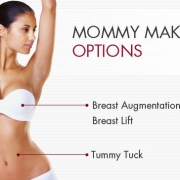
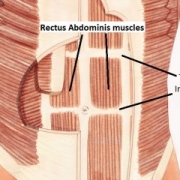
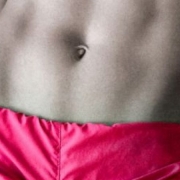
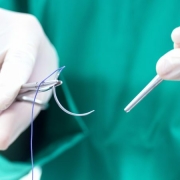
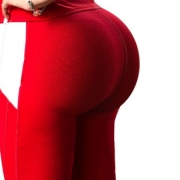


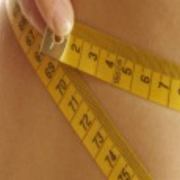


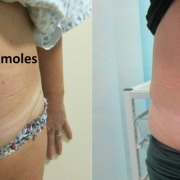
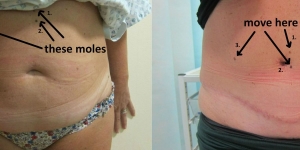
#askjj
Read Jonathan's book now!
Jonathan is on a one man crusade to revolutionise the image of cosmetic surgery and is passionate about spreading his message about cosmetic surgery training.Download our app